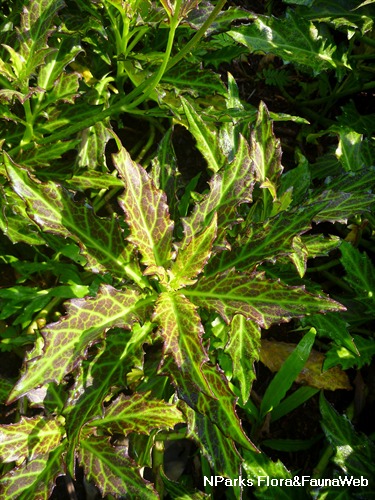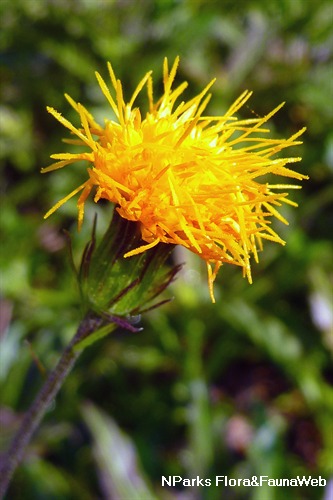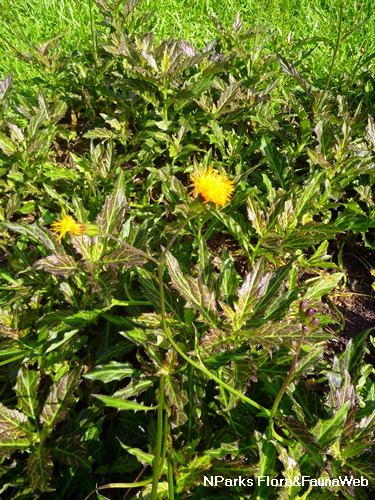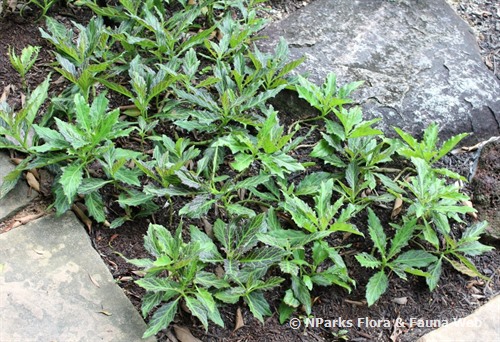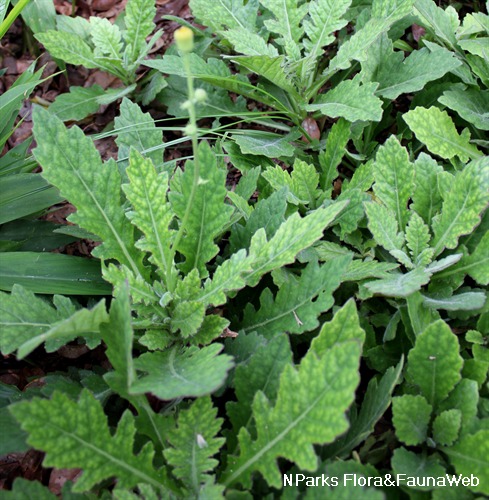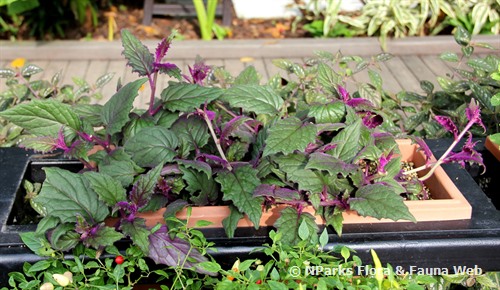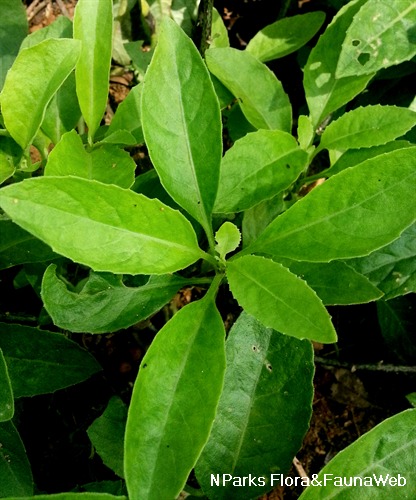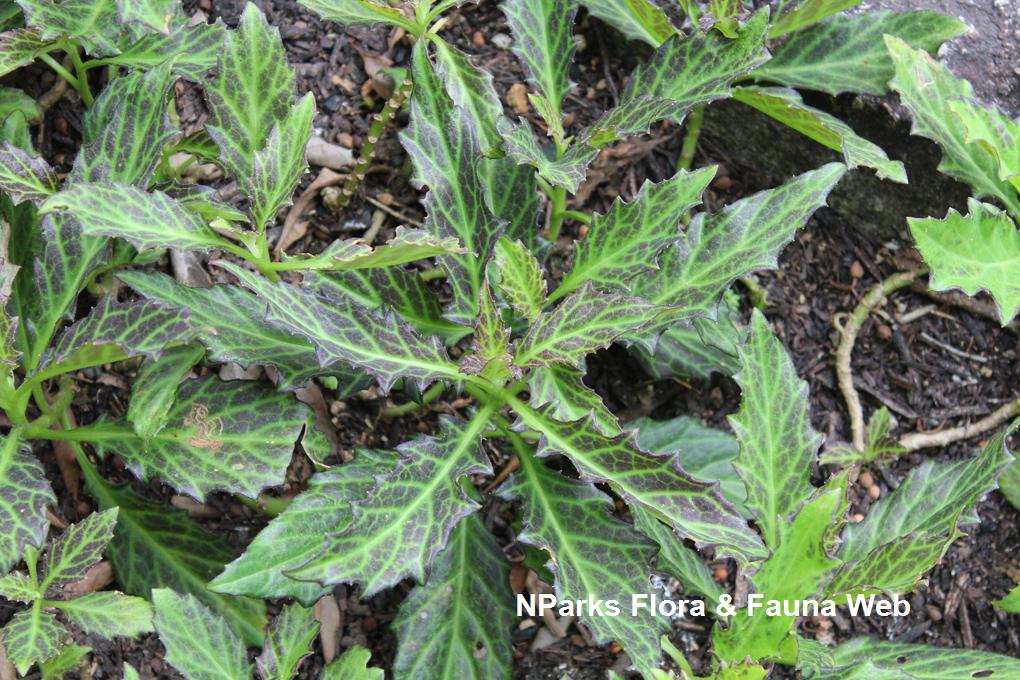
Back
Gynura pseudochina var. hispida
| Family Name: | Asteraceae (Compositae) |
| Common Name: | Sambung Nyawa Batik, 菊三七, 狗头七 |
Name
Classifications and Characteristics
| Plant Division | Angiosperms (Flowering Seed Plants) (Dicotyledon) |
|---|---|
| Plant Growth Form | Herbaceous Plant |
| Lifespan (in Singapore) | Perennial |
| Mode of Nutrition | Autotrophic |
Biogeography
| Native Distribution | South East Asia |
|---|---|
| Native Habitat | Terrestrial |
| Preferred Climate Zone | Tropical, Sub-Tropical / Monsoonal |
Description and Ethnobotany
| Growth Form | Perennial herb that typically grows about 20 - 60 cm tall in cultivation with a maximum height of 1.3 m tall. |
|---|---|
| Roots | The tuberous roots may be lobed or round and have a diameter of 2-6 cm wide. |
| Foliage | Its leaves are elliptical, ovate (egg-shaped with pointed tip), spatulate (spoon-shaped) or obovate (egg-shaped with rounded tip) and have shallow lobes. The leaf blade is 7-40 cm long and 5-20 cm wide, while the petiole (leaf-stalk) is 0.3-3 cm long. The upper side of the leaf is purple between veins while the leaf under side is green. |
| Flowers | The yellow to red, compound inflorescence is known as a campanulate head. |
| Fruit | The dry, 1-seeded fruit is known as an achene (3-4 mm long). |
| Ethnobotanical Uses | Medicinal: The underground tuber has medicinal properties. In Thai traditional medicine, the plant is used to treat short-term and chronic inflammation. It has also been used to treat fever and viral diseases. Scientific studies have shown there are compounds with anti-inflammatory properties in the leaves, but there are also potentially toxic compounds as well, so more study is required. |
Landscaping Features
| Desirable Plant Features | Ornamental Foliage |
|---|---|
| Landscape Uses | Small Gardens |
Plant Care and Propagation
| Light Preference | Semi-Shade |
|---|---|
| Water Preference | Moderate Water, Occasional Misting |
| Rootzone Tolerance | Well-Drained Soils |
Foliar
| Mature Foliage Colour(s) | Purple, Green |
|---|---|
| Foliar Type | Simple / Unifoliate |
| Foliar Arrangement Along Stem | Rosulate / Rosette |
| Foliar Attachment to Stem | Petiolate |
| Foliar Margin | Pinnately Lobed / Pinnatifid |
| Foliar Apex - Tip | Acute |
| Leaf Area Index (LAI) for Green Plot Ratio | 4.5 (Shrub & Groundcover - Dicot) |
Floral (Angiosperm)
| Flower Colour(s) | Yellow / Golden |
|---|---|
| Flower Grouping | Cluster / Inflorescence |
| Inflorescence Type | Compound Head / Capitulum |
Fruit, Seed and Spore
| Fruit Classification | Simple Fruit |
|---|---|
| Fruit Type | Indehiscent Dry Fruit |
| Seed Quantity Per Fruit | Few (1-5) |
Image Repository
Others
| Master ID | 758 |
|---|---|
| Species ID | 2053 |
| Flora Disclaimer | The information in this website has been compiled from reliable sources, such as reference works on medicinal plants. It is not a substitute for medical advice or treatment and NParks does not purport to provide any medical advice. Readers should always consult his/her physician before using or consuming a plant for medicinal purposes. |

.jpg)
